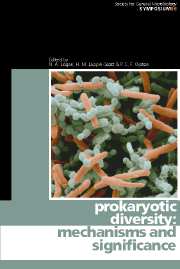
-
Select format
-
- Publisher:
- Cambridge University Press
- Publication date:
- 06 July 2010
- 20 April 2006
- ISBN:
- 9780511754913
- 9780521869355
- Dimensions:
- (228 x 152 mm)
- Weight & Pages:
- 0.64kg, 314 Pages
- Dimensions:
- Weight & Pages:
You may already have access via personal or institutional login
Book description
The true extent of prokaryote diversity, encompassing the spectrum of variability among bacteria, remains unknown. Current research efforts focus on understanding why prokaryote diversification occurs, its underlying mechanisms, and its likely impact. The dynamic nature of the prokaryotic world, and continuing advances in the technological tools available make this an important area and hence this book will appeal to a wide variety of microbiologists. Its coverage ranges from studies of prokaryotes in specialized environmental niches to broad examinations of prokaryote evolution and diversity, and the mechanisms underlying them. Topics include: bacteria of the gastrointestinal tract, unculturable organisms in the mouth and in the soil, organisms from extreme environments, the diversity of archaea and their phages, comparative genomics and the emergence of pathogens, the spread of genomic islands between clinical and environmental organisms, minimal genomes needed for life, horizontal gene transfer, phenotypic innovation, and patterns and extent of biodiversity.
Contents
Metrics
Full text views
Full text views help Loading metrics...
Loading metrics...
* Views captured on Cambridge Core between #date#. This data will be updated every 24 hours.
Usage data cannot currently be displayed.
Accessibility standard: Unknown
Why this information is here
This section outlines the accessibility features of this content - including support for screen readers, full keyboard navigation and high-contrast display options. This may not be relevant for you.
Accessibility Information
Accessibility compliance for the PDF of this book is currently unknown and may be updated in the future.


